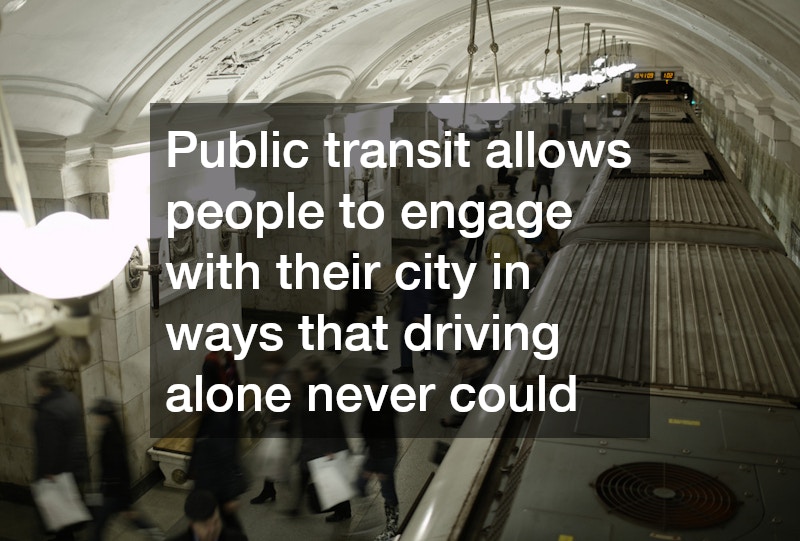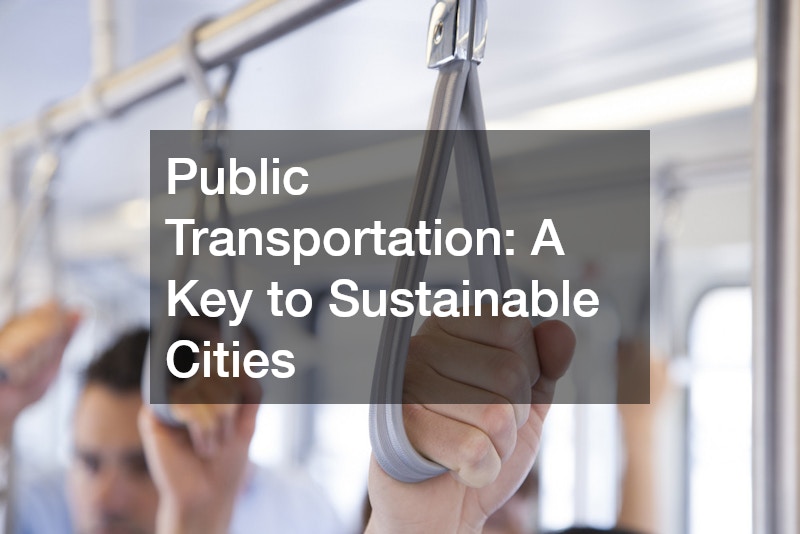
Urban centers around the world are growing at an unprecedented rate, and with this growth comes both opportunity and responsibility. One of the most effective ways to ensure cities remain livable, efficient, and environmentally friendly is through robust public transportation systems. Buses, trains, trams, and subways not only reduce traffic congestion but also contribute to cleaner air and a more connected urban experience. By investing in and promoting public transit, cities can move toward a more sustainable and equitable future.
Reducing Traffic and Emissions
One of the most obvious benefits of public transportation is its ability to reduce traffic congestion. When more people choose buses or trains over private cars, roads become less crowded, and travel times improve for everyone.
Fewer cars on the road also mean lower greenhouse gas emissions, which is essential for cities striving to meet environmental targets. Efficient transit networks allow urban centers to maintain mobility while minimizing the negative impact on the environment, creating a healthier, more sustainable urban landscape.
Cost-Effective Mobility
Public transportation provides an affordable way for residents to get around. Unlike private vehicles, which come with fuel, maintenance, and parking costs, buses and trains offer predictable and economical alternatives. This accessibility benefits everyone, particularly those who may not own a car or prefer not to drive. By making mobility accessible to a wider population, cities promote equity and ensure that residents from all walks of life can participate fully in urban life.
Enhancing Urban Planning
Sustainable cities require thoughtful planning, and public transportation plays a central role in shaping urban development. Transit-oriented development encourages higher-density housing and commercial areas around train stations and bus hubs, reducing the need for long commutes. This kind of planning helps limit urban sprawl, preserves green spaces, and ensures that infrastructure investments benefit as many people as possible. Public transportation isn’t just a means of moving people; it’s a framework for building smarter, more efficient cities.
Encouraging Healthier Lifestyles
Public transit encourages physical activity in ways that private vehicles cannot. Commuters often walk or cycle to reach transit stations, adding exercise to their daily routines. This simple integration of movement can improve overall public health and well-being. Additionally, reduced car usage lowers urban air pollution, creating a cleaner, safer environment for all residents. When people combine transit use with walking or cycling, they are making choices that benefit both their health and the health of the city.
Fostering Community and Connectivity
Beyond the practical advantages, public transportation strengthens social cohesion. By sharing space with fellow residents, commuters experience a sense of community and shared responsibility. Public transit allows people to engage with their city in ways that driving alone never could. Whether it’s discovering a new neighborhood, supporting local businesses, or interacting with diverse communities, public transportation helps build a more connected urban culture.
Supporting Innovation and Technology
Modern public transportation systems are increasingly incorporating technology to enhance efficiency and convenience. Real-time tracking, mobile ticketing, and integrated payment systems improve the user experience, encouraging more people to choose transit over private vehicles. Smart infrastructure and sustainable energy solutions, such as electric buses or energy-efficient trains, are also shaping the future of public transit. Cities that embrace these innovations are better equipped to manage growth while minimizing environmental impact.
A Role Model for Sustainable Cities
Successful public transportation systems often serve as models for other cities seeking to implement sustainable practices. Singapore, for example, has consistently invested in expanding and modernizing its transit network, making it easier for residents to rely on public transit for daily commutes. Leadership plays a crucial role in these achievements, ensuring that public transportation is accessible, efficient, and forward-looking. The efforts of the SMRT CEO highlight the importance of guiding urban transit systems in ways that prioritize sustainability, connectivity, and long-term urban well-being.
Public transportation is more than a convenience, it is a cornerstone of sustainable urban development. By reducing emissions, improving accessibility, shaping urban growth, and fostering community, transit systems play a vital role in building cities that are resilient, equitable, and environmentally responsible. As cities continue to grow, investing in efficient, innovative, and well-managed public transportation ensures that urban life remains vibrant and sustainable for generations to come. With strong leadership and continued innovation, public transit can transform cities into spaces that are not only functional but also enjoyable and sustainable.




